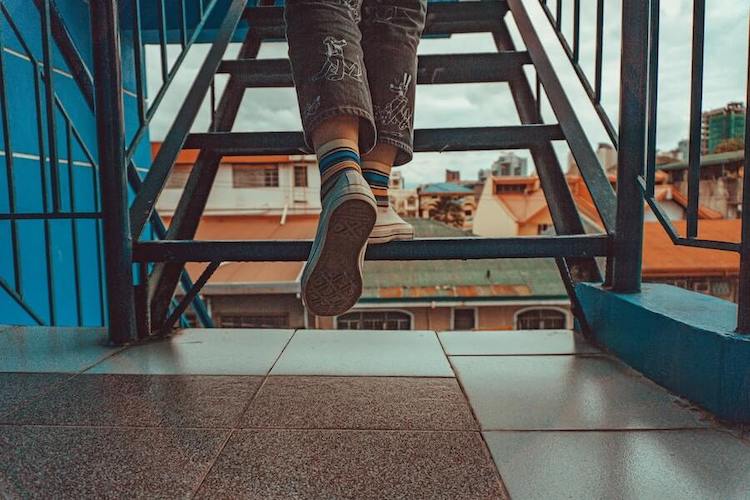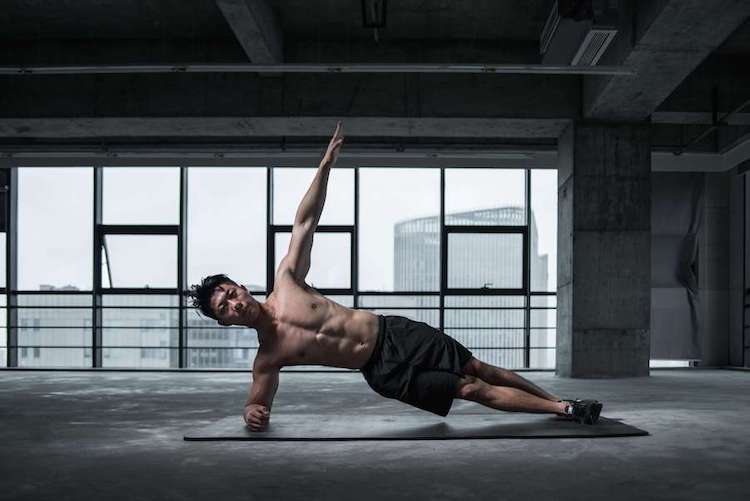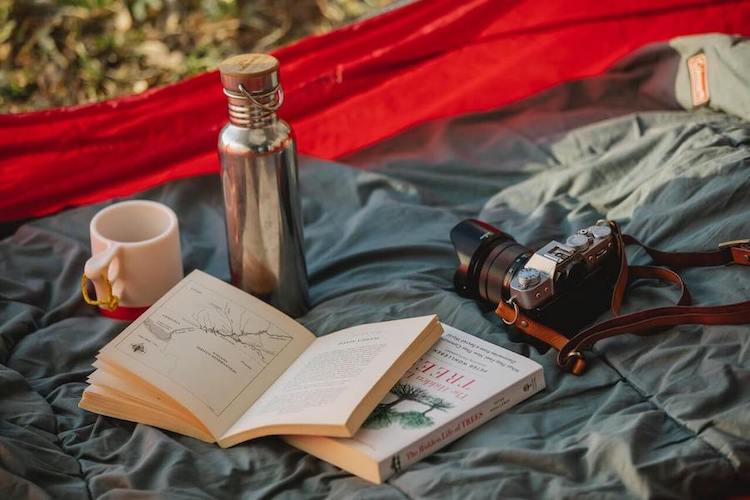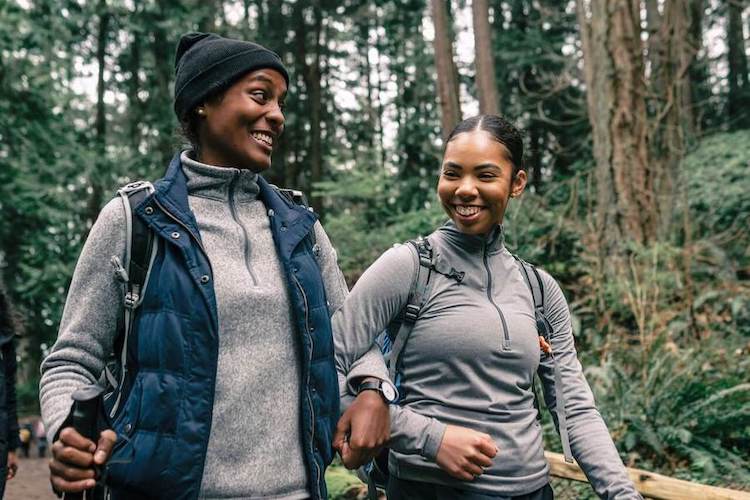More than physical activity, hiking is a real therapy that is good for the body and the mind. We hike to feel closer to nature, to meditate and clear the air, to launch out, and overcome challenges.
But if you think you can just hop off the couch after a long layoff, slip on your boots, and hit the trail, think again. Most trails are uneven and have at least some elevation gain, so even the easiest hiking requires balance and strength so that your discovery of the mountain peak is a pure pleasure and does not turn into a real ordeal.
The good news: Getting back into the swing of things isn’t as hard as you think and here is our advice on how to prepare physically for your first hike.
First of all, it is important to consult your doctor, especially if you are not used to exercising at all. Very important for any type of hike: Always walk at your own pace. No matter what the pace of your group, listen to your body, and don't hesitate to walk slowly and take breaks!
The hike consists mainly of walking, for several kilometers, carrying a backpack containing your food and equipment for several hours, often on uneven terrain with more or less steepness and this comes with some common hiking injuries such as ankle rolling and ankle sprains. If you’re out of shape or just haven’t been active for a while, start with some basic exercises to warm up your muscles and get your heart rate up.

Walking in nature
To prepare for walking in nature, there is nothing better than walking! We advise you to start walking in small doses by integrating it into your daily life: Walking in the morning by parking a little further from the office or leaving the car in the garage this time, walking to do your shopping, walking the dog, going for a walk with the children, climbing the stairs instead of taking the elevator… The minimum would be to walk half an hour a day, at least for a few weeks before your first hike.

Cardiovascular activity
You should be doing a cardiovascular activity that will allow you to naturally build your endurance, and which will allow you to provide a continuous effort over time to reach your final goal. Developing your cardiac capacities and your breathing will also allow you to stay alert, even when tired, and thus avoid the risk of falls or injuries during the hike.
Running trains the body (and mind) to support the continuous effort. Incorporate a jogging session into your morning routine, find friends to run at the end of the day or during the weekends! We advise you to start running for about 30 minutes 3 times a week, two months before the date of your hike, on different types of terrain and gradually integrating more difficulty (slopes, descents, etc.). This helps build the muscles that protect your knees and ankles.
If you don't like or can't run for health reasons, opt for a cardio activity that is less violent on the joints such as cycling, stationary cycling, swimming, aerobics or dancing. Whichever you choose, make sure to get your heart rate up. This will help build your lung capacity so you can hike longer and be successful on your first hike.

Stretching and flexibility
To avoid muscle soreness and other injuries, always make sure to stretch before and after any physical activity. In our case, it will mainly be about stretching the muscles of the legs and back. What if we integrated stretching sessions and zenitude? Get into yoga! Yoga will allow you to acquire flexibility but above all teach you how to breathe well. This is particularly useful for long hikes where the moral plays a lot on the physical. You will be amazed at how adaptable our bodies are when the mind is strong. Namaste!

Step-ups
Before a backpacking trip, weigh your pack (use 20 lbs. to start) and step up onto a park bench 16 to 18 inches high. Add 5 pounds a week until your pack is as heavy as it will be on your hike. To prepare for an extended, multi-day hike, do this exercise three times a week until you can do 700 steps in less than 30 minutes.

Core strength
Start doing Crunches to build your core strength, this will help you keep your balance on uneven surfaces as well as squats and lunges to keep your back straight and take each squat and lunge slowly to strengthen your core muscles. Don’t forget to work on your upper body strength (especially in your back) as it will serve you well on long trips where you need to carry a heavier pack, for this you can do regular Push-ups.
If you’re a beginner or haven’t been out hiking for a while, celebrate the good weather with a day hike. But first, let your body know you’re going to be pushing it beyond your afternoon stroll. If you’re planning a hike for the weekend, here are some tips to get your body in shape. Start by walking two or three times during the week and move briskly enough to get your heart rate up, and then keep it up for at least 30 minutes. Make sure to wear the same shoes that you’ll be wearing on your hike. A sure-fire way to get blisters is to walk for a long time in shoes you haven’t worn in a long time (or at all) and carry a lightly-weighted daypack on your weekday walks. That way, you’ll make sure you’re prepared to tote your essential gear.
If you’re planning a multi-day hiking trip, You must get in shape for backpacking to avoid waking up on day three too sore to keep going. Luckily, the Atlas Mountains hike takes a maximum of 3 Days, However, give yourself time to prepare for several days of hiking to be ready for any Unpredictabilities.
No matter how long your backpacking trip is going to be, preparation is key! Take yourself on walks and shorter hikes three times a week wearing the same boots you’ll wear on your trip, and if they are new boots, you might want to start by wearing them around the house for a few days to give yourself time to break them in. Make sure to wear your backpack on a hike and to gradually increase the load until it’s as heavy as it will be on your trip. If you get any sores during this process, make sure to not stop, otherwise, you will lose all the strength you built up, think of swimming, this will help you build strength and lung capacity without injuring your sores.
Hiking is one of the best outdoor activities. It can be extremely enjoyable if it is
well planned in advance. Whether you prefer going for, an epic journey or just a walk in the
woods, planning is an essential element that will make the hike a real success.
Here are a
few smart tips you can use to make your hiking trip fun and safe.
Before starting any hike, you must have a clear and precise idea about where you are going, how long your journey will take you, the elevation and altitude, what the weather conditions are, where and when to sleep, what to eat, learn about the risks (avalanches, stones, unwanted animals, etc.), and know where the nearest villages and lodges are located in case you will come to require any help. So even if you are supported by a guide, it is essential to prepare your hike itinerary.
While they say keeping quiet may help you achieve your goals, this rule doesn't apply to hiking. Before any hike make sure to share your trail plans with those closest to you - especially if you'll be hiking alone - and inform them when you will start and when you're supposed to return. This keeps them in the know, so that they can send help in the case you’re not back on time. Also, do not forget to have with you a card with your personal and contact information.
Before going for a hike, it is very important to be sure that your gear is in good condition. Take your time to do a trial run on everything in order to be sure that all is well and make sure your backpack does not get heavy. If you are going for long-distance hikes, an extra pair of good-quality hiking boots can come handy (for long-distance hikes).
Before you go out hiking, make sure you have a first aid kit with essential items. Although everyone has different medical needs, a basic kit should have: bandages and gauze, small roll of medical tape, alcohol wipes/ povidone-iodine, antibiotic ointment, anti-inflammatories, non-latex gloves, tweezers, antihistamines (for bee stings or bug bites), eye drops, an epipen (in case anyone has a serịous allergy), snake bite kit (if you’re hiking ịn an area with poịsonous snakes) and any personal medications.

Hiking equipment
Good equipment is essential to make your first hike more enjoyable: good, comfortable walking shoes adapted to the type of hike, a light backpack adapted to your size and your body type, breathable “technical” clothing adapted to the climate, a first aid kit, something to eat and hydrate while walking, and any other necessary accessories (sunglasses, sunscreen, trekking poles, etc.). Remember that the backpack should not exceed 20% of your weight so as not to handicap you during the hike!

Have fun during your hike
If you can't make it to the top of the mountain or the volcano crater, don't despair! The magic of hiking is that the path taken is far more important than the destination. Enjoy every moment of your adventure! Be proud of what you have been able to accomplish! And start again!